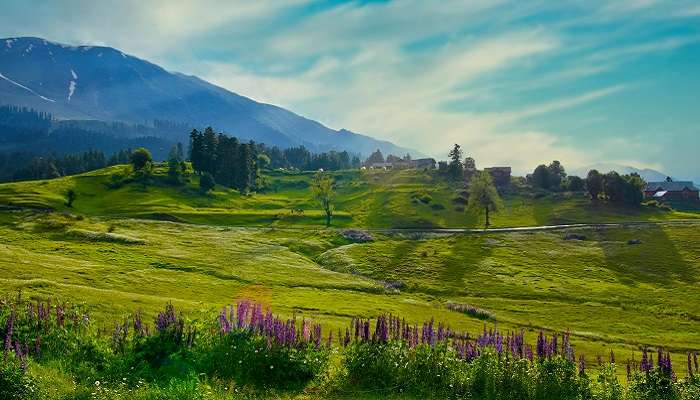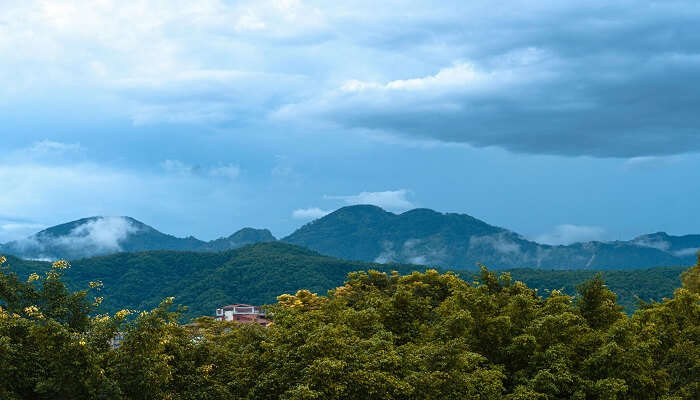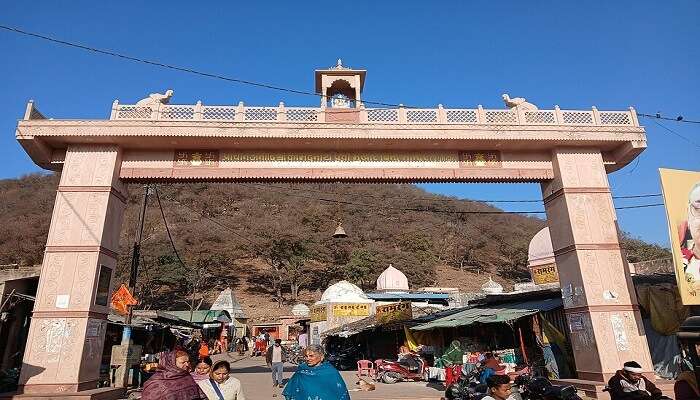Embark On An Adventurous Journey To Friendship Peak In 2025
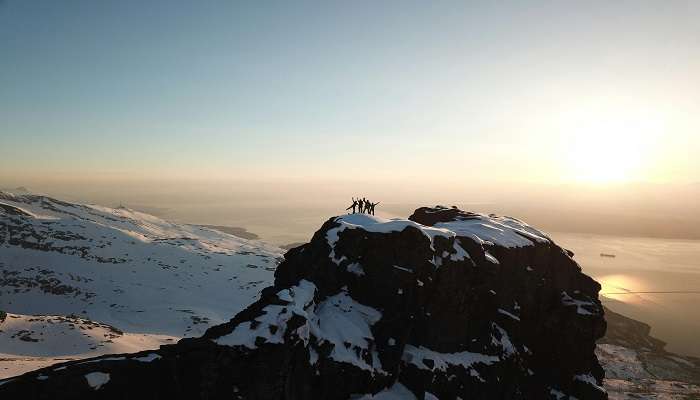
Friendship Peak, located in the Pir Panjal range of the Himalayas, can be considered a trekking and mountaineering destination. This mountain rises majestically to a height of 5,289 meters and perfectly combines adventure and nature. The route to Friendship Peak begins with an astonishing route from the fabulous town of Manali, with soothing trails going through greenery and beautiful forest vistas. The higher you get, the scenery changes, and you begin to see vast snow tracks, cutting glaciers and sparkling rivers. This journey, while being hard, is a very fulfilling one and is crowned by a view of other giant Himalayan Mountains. Being an easy to moderate trek, Friendship Peak can be availed by first-time and experienced trekkers; apart from a rigorous climb it is a spiritual and breathtaking journey.
Weather Of Friendship Peak
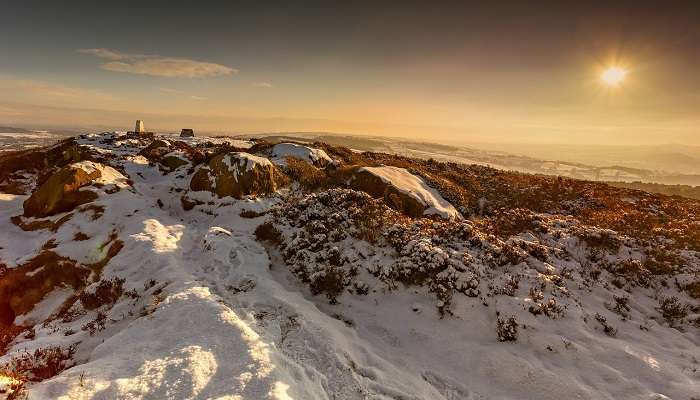
Summer
Its temperature range is between 5°C and 20°C. It is moderate and sunny in the lower regions and slightly cool in the higher grounds. The climate involves infrequent rain showers during the region’s monsoon season. However, by July and August, which is the monsoon season, there will be rain, and this makes the trails slippery in instances where landslides characterize them.
Autumn
It varies between 0°C and 15°C. Neat with clear sky conditions acquired after the monsoon season. It is dry and cool which makes this perhaps the best time to go for a trek. Favourable trekking conditions are characterized by good weather, good visibility, and no traces of wetness on the trails.
Winter
It varies from -10 °C to—20°C at higher altitudes. It is rigorous and very cold, with blizzards or frequent snowfall. The peak and areas around it are constantly blanketed with snow, making the trekking very difficult and, at times, out of question. Winters with snow blanketing the tracks have high chances of an avalanche and low temperatures below freezing point.
Spring
It is between 0 °C and 15 °C. A slow rise in the temperatures causes the snow to thaw, especially at low altitudes. Trekking is relatively good in this season since the weather is stable and moderate compared to the winter season. The views of the landscape change dramatically, and the flora brightens up, painting the landscape and surroundings.
Must Read: Atal Tunnel
Trekking Route Of The Friendship Peak
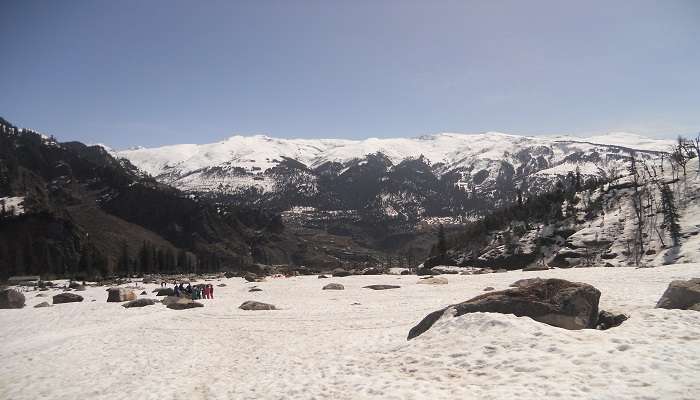
Trekking to Friendship Peak starts from the colourful town of Manali with an altitude parameter of 2050 meters. The first day of the trek takes through the thick forest and rich green grasslands of the Solang Valley, followed by a steep climb to reach the beautiful camp spot at Bakarthach at a height of 3,350 meters. The next day is dedicated to getting used to the conditions and getting some technical training, which is important for the tough climb that is coming. Climbing begins early in the morning as individuals traverse through the snow and ice fields, traversing the steep and icy slopes and utilizing crampons and ice axes. The last push to the top is physically challenging, but stunning views of the mountains and the valleys will reward the efforts.
Distance from Summit to Base Camp: 10-12 km (round trip)
Altitude: 4,000 meters to 5,289 meters
Preparation & Gear Needed For The Trek
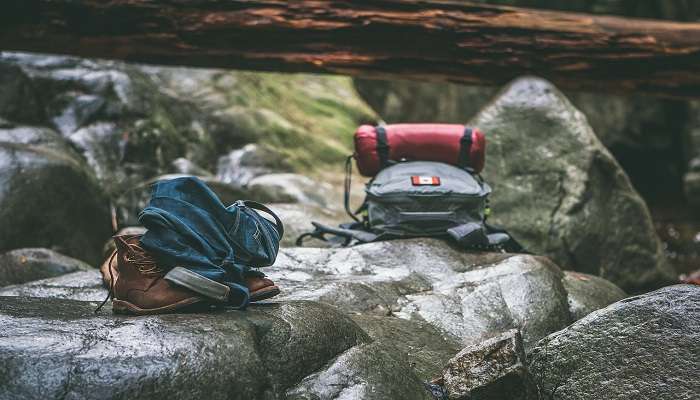
A lot of planning is involved in a trek to Friendship Peak so that the safety and comfort of the trekkers can be enhanced. Health is important; trekkers should do cardiovascular exercises, strength training, and weight-bearing exercises at least three months before the hike. This entails strong and water-resistant trekking boots, suitable clothes for different climates, and a high-quality sleeping bag for subzero temperatures.
Equipment like crampons, ice axes, and climbing ropes is essential for moving through the ice and snow paths during the climb. A first aid kit, suitable drinks and thirst-quenching liquids, and high-energy snacks are also important for boosting energy during emergencies.
Suggested Read: Trekking In Manali
Food & Accommodation Options Along Friendship Peak Trek
To plan a successful trip to Friendship Peak, there are some food and accommodation options you need to keep in mind. Here is a list specially made for you to have an unforgettable experience:
1. Manali
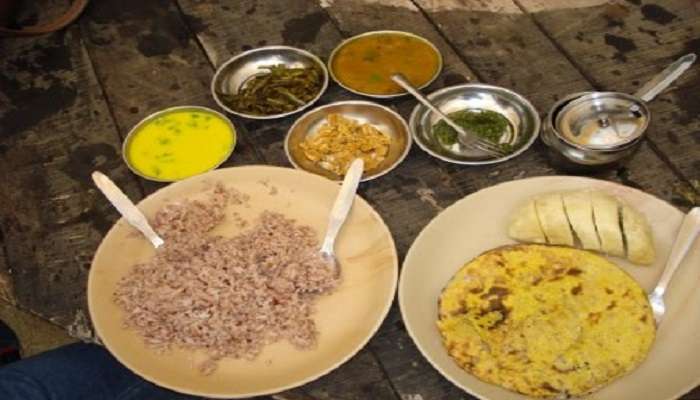
Food: The local eateries in Manali serve some of the exotic Himachal dishes, such as chana madra, steamed bread, etc. The places here offer good dining places for final meals before the trek and shopping for items that you can carry on the trek.
Accommodation: Hostels, on the other hand, are for budget-conscious travellers, providing cheap accommodation in a lively environment. Mid-tier setups like hotels offer more comfort and a better range of services; luxury resorts, meanwhile, which are closer to the start of the trek, offer premium services and breathtaking views.
2. Solang Valley
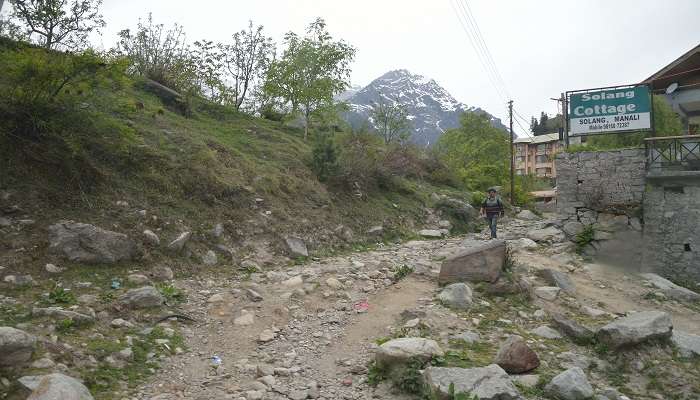
Food: Local restaurants and camp kitchens offer typical Indian cuisine that comprises dishes like dal chawal and aloo paratha. These are meant to support the trekkers and give them energy for the remaining part of the journey.
Accommodation: Trekkers often camp in simple campsites established in the valley, which provide the necessary facilities for comfort.
Suggested Read: Dhankar Fort
3. Bakarthach
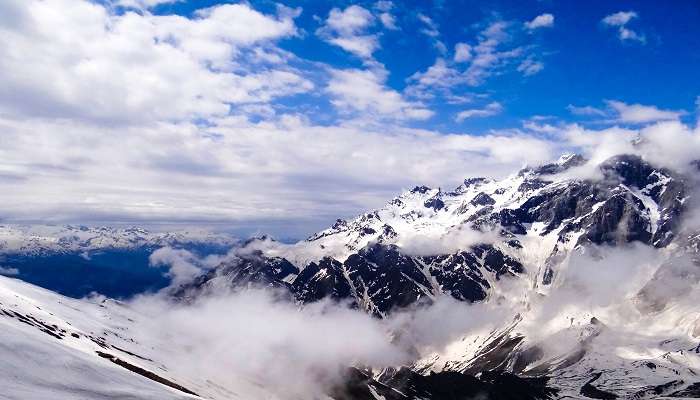
Food: The trekking team prepares meals at Bakarthach. These simple meals are rich in carbohydrates and proteins that are easily digestible; these are rice, lentils, vegetables, and tea. This aids in keeping the energy going and ensures that the trekkers are always well-fed.
Accommodation: The main accommodation offered at Bakarthach includes the tented camps arranged by the trekking companies. These camps also have necessities like sleeping bags and mats and ensure the trekkers have a warm and sound sleep after trekking for the day.
4. Base Camp
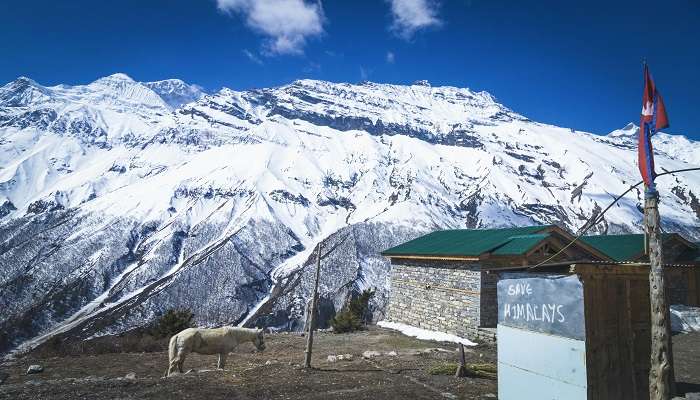
Food: The camp kitchen serves pasta, rice, and protein power dishes, among other meals, as well as warm drinks to help the trekkers warm up.
Accommodation: These are sleeping tents meant for acclimatization and rest before beginning the final part of the climbing process.
Further Read: Keylong Market
Walking from the lively streets of Manali to the base camp, you’ll find that every step holds a discovery and a chance to grow personally. This trek is special because it lets you connect with nature and learn about the local culture. Start your adventure to Friendship Peak, and plan a trip to Himachal Pradesh now. The journey to the top is worth it!
For our editorial codes of conduct and copyright disclaimer, please click here.
Cover Image Source: Pexels
Frequently Asked Questions About Friendship Peak
How tough is the hike to Friendship Peak?
The journey to Friendship Peak involves seriously steep climbs, rocky landscapes, and snowy fields. To make it to the top, you should have high-altitude hiking experience. It's a good idea to incorporate a mix of cardio and strength training to handle the challenging conditions.
What's the elevation of Friendship Peak and how to get ready for the high altitude?
Friendship Peak towers at 5,289 meters. To prepare, spending a few days at lower altitudes before heading up is a good plan. Drink plenty of water, avoid alcohol, and go at a steady pace during the climb. Also, chat with your doctor about using Diamox to help prevent altitude sickness
How many days does the Friendship Peak trek usually take?
Takes about 8 to 10 days to Friendship Peak. That's considering your arrival and departure from Manali, the trek to the base camp, and then the summit. Don't rush it, give your body time to get acclimatized to avoid the risk of altitude sickness.
What's the best way to get ready for the cold and changing weather?
Start with clothes that'll keep sweat away from your body, like moisture-wicking shirts and pants. Some warm mid-layers, like a fleece or a down jacket and a waterproof and windproof outer layer to stay dry. Keep your hands, feet, and head warm.
What happens if there's a medical emergency on the trek?
Let your guide know as soon as possible. If it's a big issue, they will help you get out of there by heading down to a lower altitude or even setting up a helicopter rescue, depending on how bad it is. Make sure you've got travel insurance that's got you covered.
People Also Read:
Hatu Peak Gorichen Peak Shillong Peak

We all have to begin somewhere. This is where I start and I hope that my writings encourage you to begin. To new beginnings and conquering new places!



